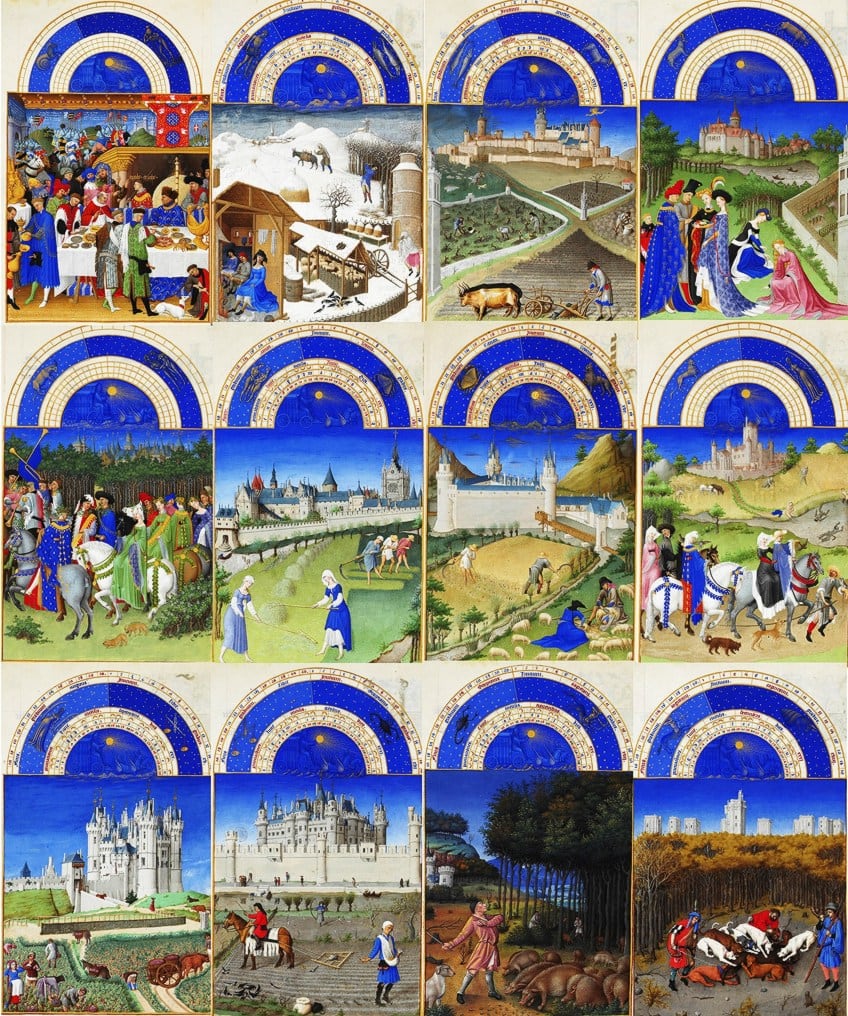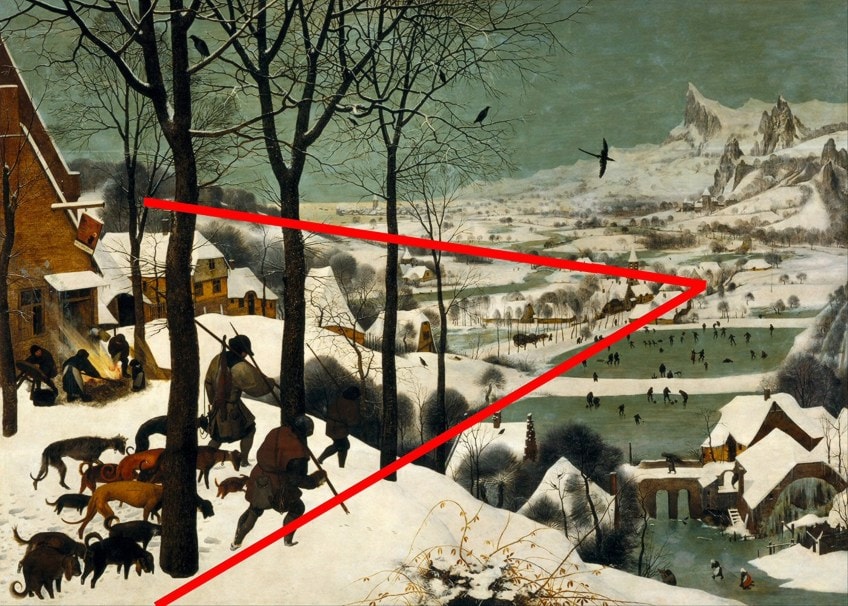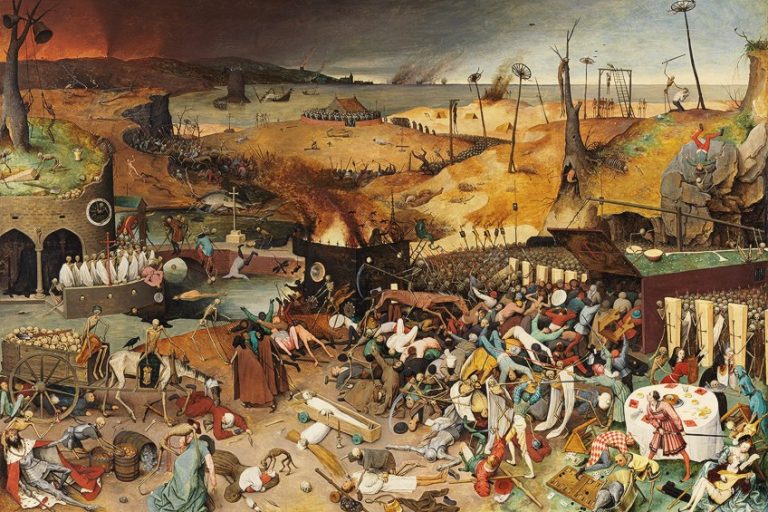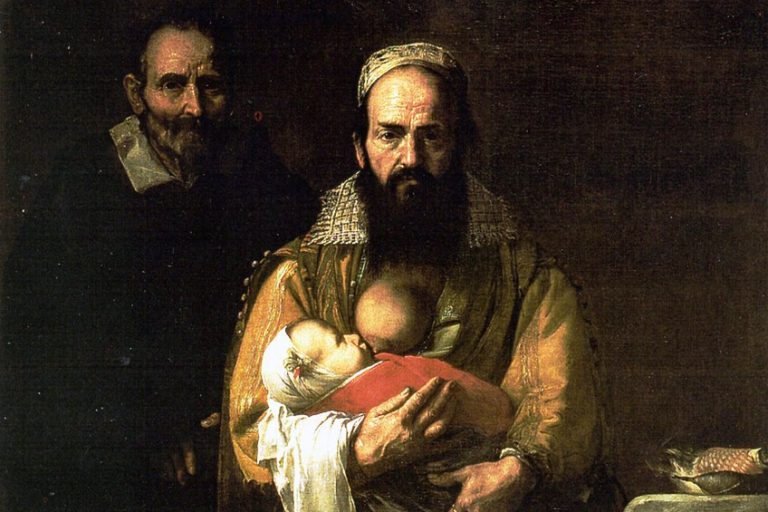“Hunters in the Snow” Bruegel – Iconic Flemish Genre Painting
Imagine a winter scene: hunters return from their hunt, people are ice skating, playing ice hockey, ice sledding, and just going about their daily activities completely oblivious of you watching them from a bird’s eye view. This is just one moment captured for eternity by the Northern Renaissance artist, Pieter Bruegel the Elder – let us look more closely.
Table of Contents
Artist Abstract: Who Was Pieter Bruegel?
Pieter Bruegel the Elder was part of the Northern Renaissance art period. He was a Flemish artist. It is estimated that he was born around 1525. He was reportedly from Breda, which is a city in the southern Netherlands. He worked for a few Flemish artists and publishers, namely, Peeter Baltens as an assistant for an altarpiece and Hieronymus Cock, as an engraver. He also studied under Pieter Coecke van Aelst.

In Antwerp, where Bruegel moved to, he was commissioned to paint a triptych altarpiece, in 1550, and also became part of the Guild of Saint Luke in 1551, which helped launch his career as an artist. He was inspired and influenced by Hieronymus Bosch and traveled to Italy admiring the scenery of the Alps.
He acquired numerous commissions throughout his life and became well known for his landscape art and is remembered as one of the last Northern Renaissance artists.
Hunters in the Snow by Pieter Bruegel the Elder in Context
Hunters in the Snow (1565) by Bruegel is a famous genre painting scene of the winter season and created from the artist’s characteristic aerial vantage points. However, there is more to this painting than just it being what is widely referred to as a “winter wonderland”. In this article, we will provide a Hunters in the Snow analysis.

First, we will discuss a bit of a contextual analysis by looking at the socio-historical context in which Bruegel painted during the 1500s. What exactly was happening during this time in European history? This was quite a different time to the Italian Renaissance style and the Protestant Reformation impacted art in a significant manner and the Hunters in the Snow symbolism.
Second, we will discuss the subject matter and other stylistic aspects (Formal analysis) of the painting, for example, how Bruegel utilized color, light, and the perspective, of which many of his artworks are characteristically portrayed from above angles.
| Artist | Pieter Bruegel the Elder |
| Date Painted | 1565 |
| Medium | Oil on panel |
| Genre | Landscape painting |
| Period / Movement | Northern Renaissance (Netherlands) |
| Dimensions | 117 x 162 centimeters |
| Series / Versions | Part of a series of 12 landscapes that depicts the different seasons |
| Where Is It Housed? | Kunsthistorisches Museum, Vienna |
| What It Is Worth | Not available |
Contextual Analysis: A Brief Socio-Historical Overview
The Protestant Reformation was an act against the Catholic Church and various acts by Pope Leo X who made it commonplace to sell indulgences. In 1517 in Germany, it was Martin Luther who brought awareness to this, and he was one of the pioneers of the Reformation. Luther was also popular for his Ninety-Five Theses, which sought to dispute what the Papacy was advocating. Although this is a brief outline of the events that occurred at the onset of and during the Protestant Reformation’s formation.
The important point to take from this is that the production and purpose of art were different for the Catholic Church and the Protestants, which is where our “Hunters in the Snow” analysis falls into.
Protestant art sought to depict everyday scenes and everyday people, which touched on a deeper, more intimate relationship with God. This compared to the iconoclastic depictions of religion and religious members including saints by the Catholic Church.

The Protestants veered away from depicting religious subject matter, however, the different sects within Protestantism had varying rules and some did depict religious subject matter, but the main theme of Protestant art was that of “humble” portrayals of people and life.
Pieter Bruegel the Elder was a Flemish painter who painted scenes with moralistic themes and narratives often incorporating various proverbs or idioms as visual personifications. He also painted numerous landscape scenes and often all Pieter Bruegel paintings were done in detail, requiring viewers to spend quality time engaging with each part of the composition and its meanings.
Bruegel was also famously known as “Peasant Bruegel” because he depicted the everyday lives and activities of peasants in many of his paintings. Some even argue that he was a peasant, but sources suggest he was a learned man.
This is an important point to remember about Bruegel to better understand the subject matter of his paintings.

Hunters in the Snow was commissioned by a banker from Antwerp, Nicolaes Jonghelinck. This specific painting is part of a series of other paintings that all depict the different seasonal times of the year, of which Jonghelinck also commissioned. There are only five in existence now, including this one, which depicts deep winter around the months of December and January.
The other four paintings are, namely, for Springtime, The Gloomy Day (1565) which are the months around February and March; for Summer, The Hay Harvest (1565) around June and July; for late Summer, The Harvesters (1565), which is around July and August; and for the start of Winter, The Return of the Herd (1565), the October and November months.
Depicting the seasons of the year and their respective months, including the various activities, was a common part of artistic tradition in areas like Northern Europe.
Bruegel’s seasonal paintings are testaments to this tradition; another famous example of one of these types of paintings by the brothers Herman, Paul, and Jean de Limbourg is Les Très Riches Heures du Duc de Berry (1413 to 1416). This was an illuminated manuscript painted for the Duke of Berry also depicting the twelve months of the year and the respective seasons throughout.

Formal Analysis: A Brief Compositional Overview
Below we look at the subject matter of Hunters in the Snow by Bruegel and some of the stylistic aspects the artist utilized to tell the story of this wintery landscape scene. It is also interesting to note that although this scene appears idyllic in its wintery glamour – it has also been the subject for many Christmas cards – and we probably also feel like having a hot chocolate in front of a cozy fireplace just gazing at it.
However, the conditions during this time were not as romanticized as they appear from our vantage point.
From the 16th until as late as the 19th century, Northern regions experienced what was referred to as the Little Ice Age. This period had increased ice and snow as well as severe disruptions to food production, which led to famines and death. Numerous restrictions were also set in place to mitigate the destruction caused by the cold weather.
Subject Matter
Starting from the bottom left corner of the composition we see three hunters and a pack of hunting dogs enter the scene. Both the men and dogs appear subdued in their body postures suggesting they did not have a successful hunt.
The only visible evidence from the hunt appears to be the dead fox slung over the right shoulder of the man farthest from us. Evidence that escaped the hunters is seen in what appears to be the tracks of a rabbit, in front of the hunter closest to us.

To the far left, there is an inn with five people (four adults and one child) preparing a roaring fire. This was apparently preparation for the custom of branding a pig. The inn’s skew sign hangs on one hook slightly to the right. The image on the sign depicts a stag named Saint Hubertus, who is the patron saint of hunters. The words are in Dutch, Dit is Guden Hert, which means in English “This is the Golden Deer”.
The hunting group is approaching a snowy downward slope towards a small village. As we almost walk back to the village with them, we see crows perched on the tree trunks and flying off and straight below a frozen river. There is also a magpie flying towards the right side of the composition. The frozen river below appears divided into two sections with a snow-covered embankment in-between it.
There are people ice skating, playing ice hockey, and spinning tops, and just directly below the sloping bank towards the right we see two figures ice sledding, the one is pulling the other towards the small bridge.

Walking across the small bridge towards the left side is a woman carrying a large sheaf of what looks like blackened wheat. Not too far from the ice sledding figures, there is a man curiously fiddling with some tree branches – what is he doing? To the right in the background, we see the looming and jagged tips of the snowy mountains with scattered trees here and there. There are indications of other houses and buildings all fading into the hazy snowy setting.
An interesting fact about this winter-scape is that Bruegel did not paint it from a real location, but combined various places and landscapes to create it. He did have knowledge of different places he would travel to, specifically his travels to the Alps, which was probably part of his inspiration for the mountains we see in this painting.
If We Zoom In
As per Bruegel’s style, there are numerous details and painted gems to look out for in this painting – you may just need to grab a cup of hot chocolate and gaze at it for a while to find them otherwise they would go unnoticed.
In the far distance right behind the church steeple we see a house with roaring flames coming from the chimney, there are several men trying to undoubtedly tame this fire before it becomes worse. We see two men already climbing a ladder towards the chimney and a man on the ground with another ladder. Approaching on the other side of the small arcing bridge two men approach with another ladder.
Other details include the frozen watermill, what appears to be someone on the far bank of the river shooting at some birds, and in the far-off distance, there is another village and scattered houses.
Hunters in the Snow Symbolism
Although Bruegel depicted a scene filled with the everyday activities of the villagers, the meaning he conveyed from this scene runs deeper. It is believed Bruegel touched on the idea that nature and its power, especially during the cold winter season, highlights the vulnerability of us, humans, who live right in the thick of it. We are seemingly at God’s mercy through these times. It highlights the powerlessness of humans, which we clearly see from the uneventful hunting trip of the hunters in the painting.
Color and Light
The colors Bruegel utilized in the painting mostly consist of lighter greens for the sky and river and whites for the snow. We see darker colors scattered around, for example, on the buildings, the dogs, the trees, birds, and various other objects.
Some of the buildings to the left are also painted in a darker yellow, which creates a contrast with the white of the snow directly next to it. We see more warmth in the oranges and yellows in the fire to the left.
This composition of colors creates the ambiance of a cold and cloudy day, enhancing the gloomy effects of winter, although there is an overall sense of calmness and indifference amongst the villagers despite the wintery conditions.

Perspective
The perspective in Hunters in the Snow by Bruegel is created by the way the four trees in the foreground line up directly behind the other leading our gaze down the hill, this is further emphasized by the other line of trees further down the slope just peeking into our view.
This structure creates a sense of depth, including the sloping foreground into the flatter plain below making up the frozen river and flatter land in the distance.
It is as if we are a part of the elevated mountainous region that surrounds the composition, which makes up most of the right side. This also points to another important aspect of Bruegel’s artwork, the angle he utilized to depict his landscape scenes. We, the viewers, are always gazing at the scene from an elevated angle.

Among the Greatest Northern Renaissance Paintings
Hunters in the Snow by Bruegel is just one example of many showing us the artistic skill and talent of Pieter Bruegel the Elder. His two sons, Pieter Brueghel the Younger and Jan Brueghel the Elder, continued in his artistic legacy. Beyond this, Bruegel the Elder’s style also influenced the formation of the Dutch Golden Age painting during the 1600s, which focused on landscape and the Dutch culture.
Pieter Bruegel the Elder also inspired other famous artists like the Baroque Peter Paul Rubens and Rembrandt van Rijn. He was a pioneer in the Northern Renaissance art styles and created a different landscape, so to say, of subject matter and themes compared to that of the Italian Renaissance style.
Frequently Asked Questions
What Does Bruegel’s Hunters in the Snow Mean?
Although Bruegel depicted a scene filled with the everyday activities of the villagers it is believed Bruegel touched on the idea that nature and its power, especially during the cold winter season, highlights the vulnerability of humans, who, in this painting, live right in the thick of it. We are seemingly at God’s mercy through these times. It highlights the powerlessness of humans.
Who Commissioned Bruegel’s Hunters in the Snow Painting?
Hunters in the Snow was commissioned by a banker from Antwerp, Nicolaes Jonghelinck. He also owned the other paintings that were part of a series depicting the seasonal cycles of the year. Apparently, there are only five in existence now. Hunters in the Snow (1565) is around the Winter months of December and January. The other four paintings are The Gloomy Day (1565), which is around Springtime for February and March; The Hay Harvest (1565), which is around Summertime for June and July; The Harvesters (1565), which is around late Summer moving into Autumn for July and August, and The Return of the Herd (1565), which is around the beginning of Wintertime for October and November.
What Is Hunters in the Snow?
Hunters in the Snow is a Northern Renaissance painting by Pieter Bruegel the Elder, it was painted in 1565. However, it has been the object of inspiration for numerous other pop-cultural modalities like literature and film as well as their titles, for example, the short story called Hunters in the Snow (1981) by the American author Tobias Wolff. It has also been referred to in several films by the Russian director Andrei Tarkovsky namely Solaris (1972) and The Mirror (1974), and the Swedish film director Roy Andersson’s film called A Pigeon Sat on A Branch Reflecting On Existence (2014).
Alicia du Plessis is a multidisciplinary writer. She completed her Bachelor of Arts degree, majoring in Art History and Classical Civilization, as well as two Honors, namely, in Art History and Education and Development, at the University of KwaZulu-Natal, South Africa. For her main Honors project in Art History, she explored perceptions of the San Bushmen’s identity and the concept of the “Other”. She has also looked at the use of photography in art and how it has been used to portray people’s lives.
Alicia’s other areas of interest in Art History include the process of writing about Art History and how to analyze paintings. Some of her favorite art movements include Impressionism and German Expressionism. She is yet to complete her Masters in Art History (she would like to do this abroad in Europe) having given it some time to first develop more professional experience with the interest to one day lecture it too.
Alicia has been working for artincontext.com since 2021 as an author and art history expert. She has specialized in painting analysis and is covering most of our painting analysis.
Learn more about Alicia du Plessis and the Art in Context Team.
Cite this Article
Alicia, du Plessis, ““Hunters in the Snow” Bruegel – Iconic Flemish Genre Painting.” Art in Context. October 16, 2021. URL: https://artincontext.org/hunters-in-the-snow-bruegel/
du Plessis, A. (2021, 16 October). “Hunters in the Snow” Bruegel – Iconic Flemish Genre Painting. Art in Context. https://artincontext.org/hunters-in-the-snow-bruegel/
du Plessis, Alicia. ““Hunters in the Snow” Bruegel – Iconic Flemish Genre Painting.” Art in Context, October 16, 2021. https://artincontext.org/hunters-in-the-snow-bruegel/.










